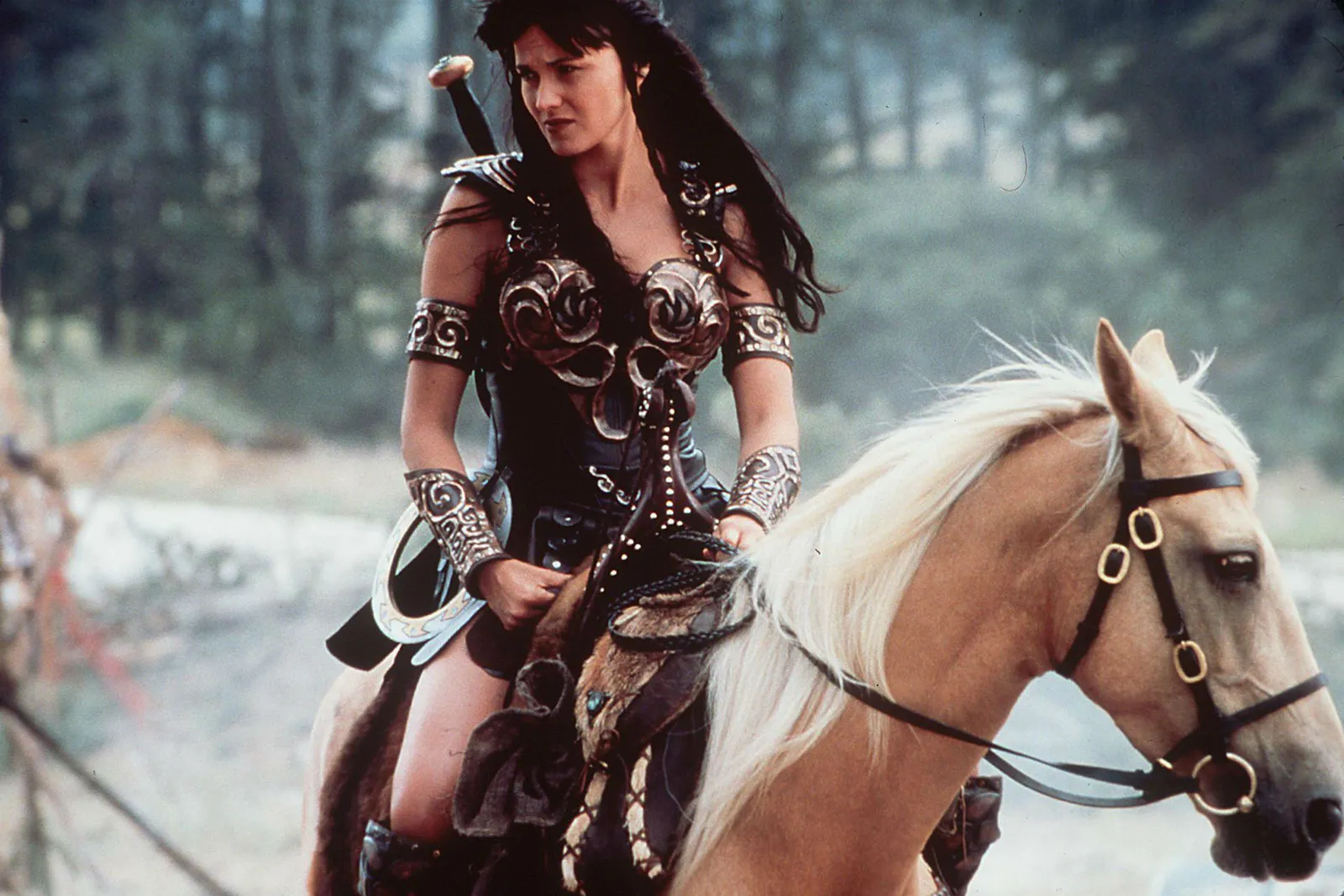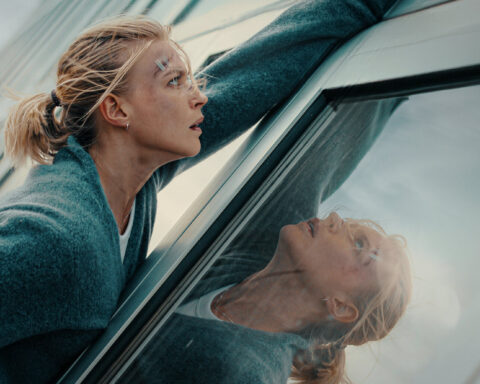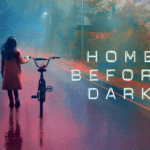‘Xena: Warrior Princess’ is a TV show that premiered on September 4, 1995, and concluded its run on June 18, 2001. Created by John Schulian and Robert Tapert, the series aired on the original network, Universal Television, and quickly captured the hearts of viewers worldwide. The show features Lucy Lawless in the titular role of Xena, a formidable warrior with a dark past seeking redemption by helping those in need. Her companion, Gabrielle, played by Renée O’Connor, evolves from a simple farm girl to Xena’s trusted ally and confidante.
As a successful spin-off from ‘Hercules: The Legendary Journeys,’ ‘Xena: Warrior Princess’ maintained strong connections to its parent series while rapidly constructing its own identity and mythos. The plot predominantly revolves around Xena and Gabrielle embarking on perilous adventures across ancient mythical lands, combatting formidable foes, gods, and demonic entities, all while highlighting themes of friendship, justice, and empowerment. Written with richly woven storylines and complex character arcs, the show left viewers eager for each episode, contributing to its lasting appeal.
The show’s initial reception can be described as groundbreaking, as it resonated with a diverse audience through its strong female leads, unconventional storytelling, and bold themes. Pop culture felt its impact when Xena swiftly became an LGBTQIA+ icon and served as a feminist role model. Its progressive portrayal of sexuality and gender roles was notably ahead of its time, adding to its significance in television history. The authentic chemistry between Xena and Gabrielle offered subtext that sparked meaningful conversations about representation and inclusion in media.
Moreover, ‘Xena: Warrior Princess’ demonstrated significant influence on subsequent TV shows and remains a classic that paved the way for future narratives centered on strong, multidimensional female protagonists. With a fandom that continues to thrive decades later, the show’s legacy as a formative and enduring feminist and LGBTQIA+ narrative is firmly cemented.
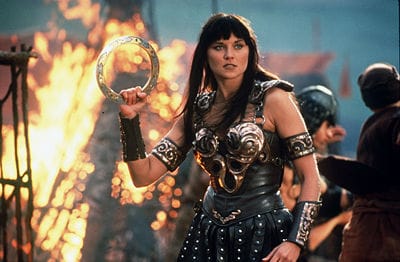

Why Xena: Warrior Princess is a Timeless Classic
“Xena: Warrior Princess” has solidified its status as a timeless classic for numerous reasons, chief among them being the profound character development of its leads, Xena and Gabrielle. Xena, initially introduced as a fierce and ruthless warrior seeking redemption, evolves into a complex figure wrestling with her dark past while striving for justice. Gabrielle, on the other hand, transforms from a naive farm girl into a formidable bard and warrior in her own right. Their evolving relationship is a cornerstone of the show’s emotional resonance, blending vulnerability with strength, and establishing an enduring, empowering representation of female friendship and partnership.
The storytelling in “Xena: Warrior Princess” showcases a remarkable quality, combining elements of action, adventure, and mythology. The narratives traverse diverse terrains—mythological epics, historical fiction, and even comedic episodes—allowing the series to appeal to a wide audience. This intricate storytelling is complemented by groundbreaking special effects and fight choreography for its time. The creative use of practical effects, dynamic camera work, and meticulously choreographed fight scenes provided a visceral experience that set a new standard in television production values for the fantasy and action-adventure genres.
“Xena: Warrior Princess” has undeniably left an indelible mark on the industry. Its pioneering depiction of strong female protagonists paved the way for subsequent television series and films, influencing everything from “Buffy the Vampire Slayer” to “Wonder Woman.” The show’s bold exploration of LGBTQIA+ themes, particularly the deep bond and implied romantic relationship between Xena and Gabrielle, broke new ground in television, contributing to the cultural discourse surrounding representation and inclusivity.
The enduring appeal of “Xena: Warrior Princess” lies not only in its innovative elements but also in its ability to resonate on a deeply personal level with audiences. The show’s combination of robust character arcs, compelling storytelling, and technical prowess ensures its legacy as a seminal work in television history.

Xena: A Feminist Icon and Role Model
Xena: Warrior Princess stands out as a groundbreaking TV show that subverted traditional gender roles by presenting strong, complex female characters. The show’s titular character, Xena, begins her journey as a feared warlord seeking redemption, and her transformation into a courageous hero who fights for justice captivated audiences. Through her character arc, the series not only challenges prevailing stereotypes but also promotes female empowerment.
Xena’s evolution from a hardened warrior to a defender of the innocent underscores her complexity and depth. Rather than being a one-dimensional character, she is portrayed with flaws, strengths, and an unwavering determination to atone for her past. This multi-faceted depiction defies the conventional portrayals of women in media, offering viewers a powerful role model whose courage and resilience inspire.
One specific episode that epitomizes these feminist themes is “The Debt,” where Xena returns to her roots to face a dark chapter of her past. This storyline showcases her inner turmoil and struggle for redemption, highlighting the strength required to confront one’s own fears and mistakes. Through episodes like this, the series profoundly impacts viewers, particularly women who see their own struggles and aspirations reflected in Xena’s journey.
Moreover, the show does not shy away from tackling issues such as female friendship and solidarity. Xena’s bond with her companion, Gabrielle, is portrayed with authenticity and depth, emphasizing the importance of mutual support and respect between women. This relationship challenges the stereotypical depiction of female relationships as competitive or trivial, offering a refreshing narrative that celebrates collaboration and unity.
Xena: Warrior Princess broke new ground by presenting female characters who were not just accessories to male heroes but were central to the story. By challenging gender norms and advocating for female empowerment, the show has left an enduring legacy, cementing Xena’s status as a feminist icon and role model for generations of viewers.
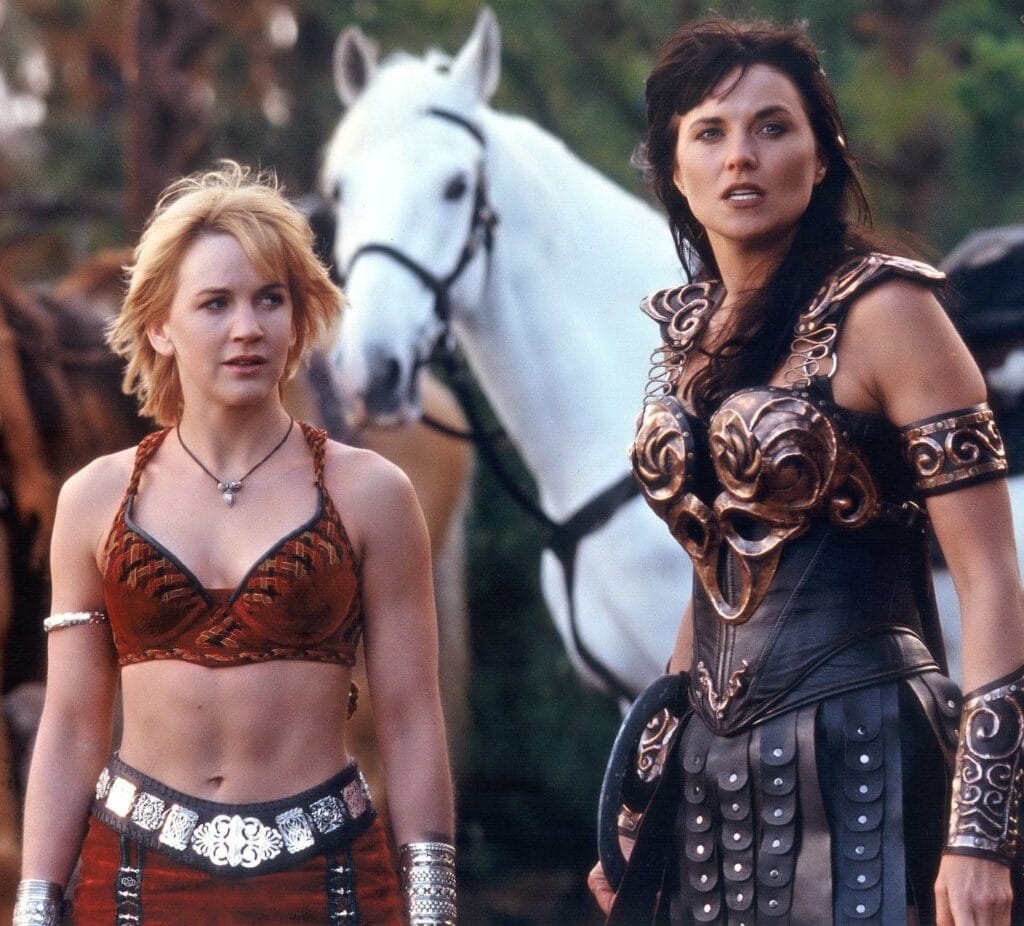
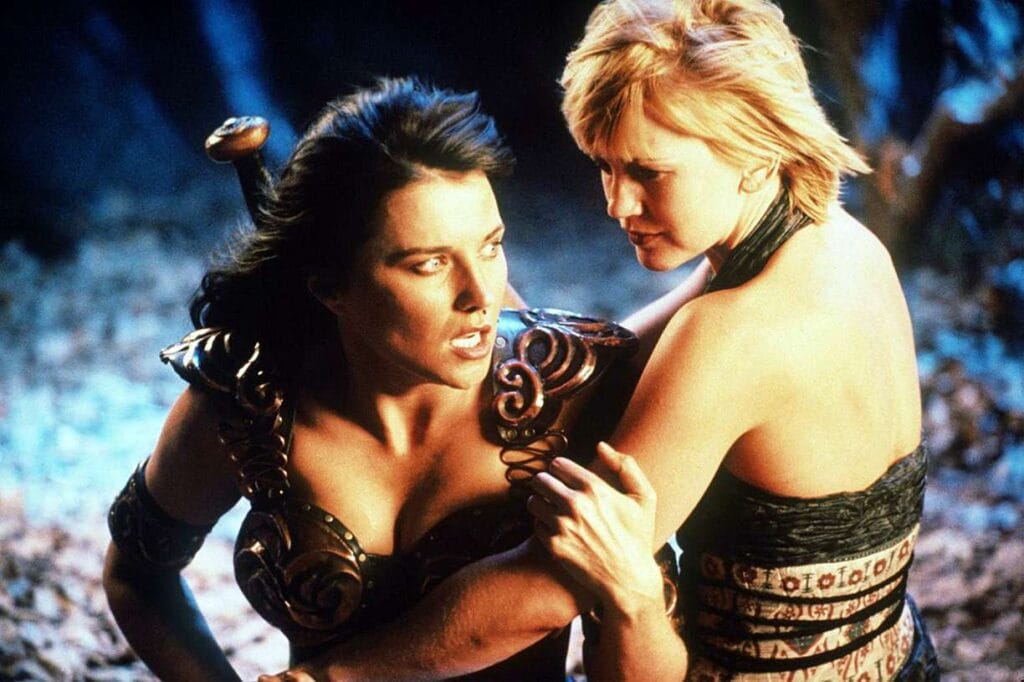
Xena: An LGBTQIA+ Icon and Symbol of Representation
Xena: Warrior Princess holds a profound place in the cultural and historical landscape of LGBTQIA+ representation on television. Emerging in the mid-90s, a time when mainstream media often shied away from explicit queer representation, the series broke barriers with its nuanced portrayal of the relationship between Xena and Gabrielle. Initially defined by friendship and loyalty, their bond gradually transcended to a deeper connection that resonated with many viewers as a same-sex relationship.
The evolution of Xena and Gabrielle’s relationship was subtle yet impactful, portrayed with a complexity that was rare for its time. The ambiguity allowed different audience segments to interpret their bond in various ways, though it became increasingly evident to the LGBTQIA+ community as a representation of the romantic and emotional intimacy shared between two women. The courage of the writers and producers to explore this dynamic subtly, without succumbing to overt labels, was instrumental in mainstreaming the discourse on queer relationships.
Significantly, Xena: Warrior Princess tackled LGBTQIA+ themes in a manner that balanced mythological adventurism with modern ideological struggles, paving the way for broader acceptance and visibility. The series managed to address issues of identity, love, and self-discovery, which are central to the LGBTQIA+ experience, thus garnering a dedicated following within the community. Xena and Gabrielle’s relationship symbolized more than just a bond; it became an emblem of resilience, love, and acceptance.
Fans and critics alike have lauded the show’s approach to queer representation. Many admire its restraint and the refusal to sensationalize the characters’ sexuality. This reflective depiction has allowed Xena: Warrior Princess to not only become a cherished classic but also a pivotal reference point in LGBTQIA+ media. The lasting legacy of the show is evident in how it continues to inspire and validate the experiences of many within the community, carving its niche as a timeless beacon of representation and acceptance.
